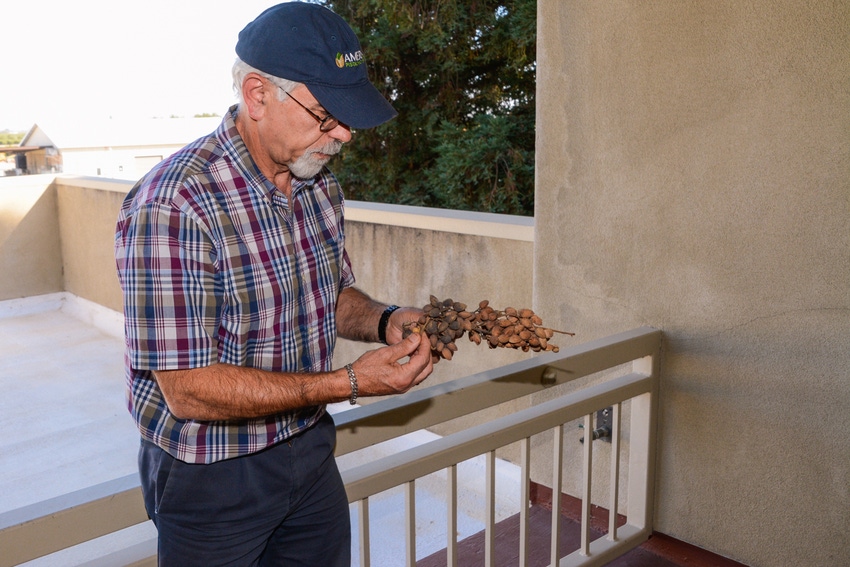
Studies of Botryosphaeria (Bot) in Northern California pistachios led a University of California (UC) researcher to develop an easy-to-use risk model to determine when fungicide sprays are necessary for the fungal disease.
Themis Michailides, UC Davis plant pathologist at the Kearney Agricultural Research and Extension Center at Parlier, came up with the method to determine spray timing based on his work in 15 different orchards in various counties over several years.
At the end of the day, Michailides was greatly reduced the frequency of fungicide sprays, particularly in pistachios, based on research that suggests when trees are at greater risk for the disease.
Since Bot is temperature-dependent in the presence of moisture, Michailides’ model provides a simple chart that graphs low, medium and high risks for infection in pistachios and walnuts, based on the duration of leaf wetness in hours, and the average temperature during the wetness period.
Because Bot affects almonds differently, this model does not apply to them, he says.
While working with a pistachio grower in northern Sacramento Valley, Michailides discovered the farmer was applying eight fungicide sprays per season based solely on the calendar.
Michailides’ studies revealed that with eight sprays the grower was able to reduce Bot to 4 percent in his orchards. Using his leaf wetness model, Michailides achieved the same control with three fungicide applications.
Controls in the study showed about 60 percent infection.
“Most growers use this model now by paying attention to rain events,” he said.
How it works is relatively simple. Leaf wetness duration is counted in hours and starts as soon as rain begins. The wetness period runs to one-half hour after the rain ends when the sky is clear to one hour after the rain when the sky remains overcast. Leaf wetness sensors can be used to more precisely detect moisture.
Dew should be managed the same as rain.
The temperature portion of the model is averaged over the wetness period. The higher the temperature, the quicker Bot can appear and the higher the risk in a shorter period of time.
Michailides ranks the relative risk of infection as low, medium and high. Anything in the low range and he does not recommend a fungicide application. Medium and high risk periods require applications and can begin with as little as two hours of leaf wetness at 77 degrees. At an average of 50 degrees the relative risk is low even at 14 hours of leaf wetness. Beyond 15 hours of leaf wetness at that temperature and he recommends a fungicide spray.
While the model greatly reduced the number of fungicide applications in the pistachio trial, Michailides was able to reduce walnut applications by one spray in his trials – reducing applications from four to three with his model.
Bot is particularly troublesome throughout the state and has different impacts depending on the tree. In pistachios, it attacks the upper part of the tree and can reduce yields by directly attacking the clusters. It can also kill buds for the following year’s crop.
While water is necessary for Bot to form in walnuts and pistachios, temperature remains the limiting factor for the disease. He says there is an airborne phase of the fungi that can impact walnuts and almonds, but scientists have not discovered this phenomenon in pistachio.
Additionally, tree wounds are not needed in walnuts and pistachios for Bot to infect the tree, he says, although pruning wounds can be easily infected in pistachio.
Several approved fungicides appear to work well with control. More information on those can be found on the UCIPM website. Tables for pistachio recommendations can be found at https://tinyurl.com/yaalysmj; and in walnuts at https://tinyurl.com/yb2vcv9f.
About the Author(s)
You May Also Like






